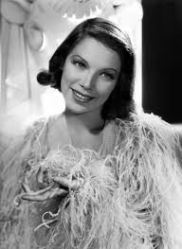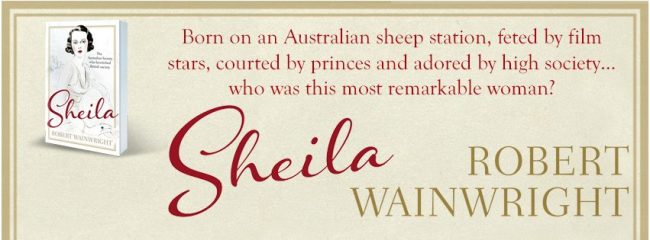
Years ago I wrote an article for The Fertile Fact, listing all of Nancy’s pet hates, had she lived in today’s fast-paced, non-U society. It was good fun, and I hope it was received in that light. However, it did and does beg the question: what would Nancy have thought of today’s youth, and where would she have fitted into today’s society? Of course her books are still widely read, but they offer a glimpse into a forgotten age when manners were important, conversation was a skill to be honed, and one put on what she called ‘the shop front’ (her public face/persona). As such, when Alena Kate Pettitt, etiquette guru and founder of The Darling Academy, contacted me I was intrigued. She posted me a copy of her delightful book, Ladies Like Us, concealed in layers of pink tissue paper as fine as silk with all the bells and whistles you’d expect from a woman who has posted the very same parcel to Catherine, Duchess of Cambridge. (Sorry Kate, your mother appeared in Nancy’s list on The Fertile Fact!)
What inspired you to write a modern day etiquette book?
I have always been interested in etiquette and as a young girl used to dream of marrying Prince William (sad but true), the Cinderella fantasy captured my imagination. Being somewhat of a self-starter I read voraciously on what set “the set” apart from the rest of us. My mother used to subscribe to Tatler, likewise she was enamoured with Princess Diana, and so her influence in addition to my childhood dream was enough to start a lifelong fascination with the peerage. I wanted to learn all there was about this alternative universe of beautiful, privileged people. Which sounds crass but they do have that je ne sais quoi that most of us identify in their countenance and lifestyle. It is an unusual confidence not owned by many. Happily, during my teens due to a family marriage I entered a glittering social setting and quickly had to learn the ropes of how things were done, what was said and importantly – what was not. It took me another fifteen years to learn the greater lesson that it is more about what is in your heart than what you show to the world that makes you a pro at handling yourself in society. In the Mitfords days there were silent codes of behaviour and what you would say in place of common words that would set you apart, but as we all know, the U like to change these rules frequently. Social climbing is a dirty little secret and common hobby of the middle classes: everyone is out to do better, I just have the guts to admit it. Having read them all, I soon became frustrated with the offerings of etiquette books that told you how to do XYZ but never divulge as to why. You can teach a monkey to have a polite afternoon tea but if he doesn’t believe he is equal to, and understand his company, he will always be a monkey. No one wants to spend time with monkeys, such curious creatures.
Etiquette is less about what you do in a clinical sense in order to be seen to be doing it, and more about having your heart in the right place and learning to be at ease in your surroundings, as well as in the company of others. Whether you are dining at McDonalds or in a beautiful restaurant in Mayfair, etiquette and knowing how to present your best self is of the utmost importance. Etiquette helps you with navigating the rules, but the true prize is learning how to cultivate elegance. I hope the advice in Ladies Like Us has achieved that.
Judging from your interests, ladies from the past (such as the Mitfords) influence you. What is it about those ladies that you admire and perhaps wish to emulate?
Oh goodness, where do I start? Let’s go with the most obvious reason. I have recently identified that the majority of the women I admire are ones from “old money families”, or frequently move in such circles. Meaning that they have lived a life of privilege and wealth but they haven’t let the money define them. Many of them are held against strongest expectations or are consistently scrutinised but manage to hold it together, regardless. Having that steely determination to paint on that smile despite what is going on at home speaks volumes of a woman’s strength. The women I most admire have gone on to run the country, write novels, or marry into a dynasty that requires a lot of self-sacrifice. If they’ve married into or made money for themselves they do more with their time than simply shop or wish to validate themselves curating a “brand” on social media. In our generation, we are constantly bombarded with “role models” who remove their clothes in exchange for flashy brand new Range Rovers and footballer’s mansions. That’s not to say that the women who inspire me were complete angels, or didn’t care about the finer things, but they played their cards close to their chests and had a determination and sense of duty lost on most women today. We live in a wealth obsessed society and the fashion is to flaunt that wealth with “things” rather than keeping hold of their sense of class and dignity. The women I admire know what really matters when you strip away the trinkets. Fool’s gold isn’t something that interests me. I want role models to challenge me to be better, be better educated, to do more for those around me – not simply to buy more things or become famous. My role models inspire me to choose quality over quantity in all things.
Which modern day vices irk you the most?
Chewing gum! Disgusting and unnecessary. I think it is the most classless and wholly vulgar thing anyone can do. Need to freshen your breath? Have a mint. However, smacking on gum and making me listen to the “pleasure” of it? No thank you. Second to this is standing to close to me in a queue. The U love their personal space, please respect it. Making your way into my personal space renders you a bumbling idiot in my book and I will be cursing you under my breath. Third, men who spit in the street. Which imbecile let them out of the zoo? Fourth, women who apply a full face of make up on public transport…. I’m realising that a lot of things irk me.
Which modern day heroine (or hero) do you think is a good example and positively Mitfordesque?
I tried to think of an intelligent and thought provoking answer, but if you are looking for my honest answer, it has to be Jilly Cooper. I love how she isn’t afraid to shock and looks at people in the most brutal of ways. Her book Class remains one of my favourites, she says what we all think and exposes the dynamics of the British class system with such accuracy. As much as people would hate to admit it, our class system is very much alive, and things haven’t really changed since she wrote that exposé in the late 70’s. She knows people and what makes them tick. Most people cannot stand her “type”, but I’d gladly crown her queen of my tribe. Given what she writes about, you’d think her trashy but from what I’ve heard on the grapevine she is a real lady. What more can you ask for? Talent, wit, brains, confidence and underneath it all, honesty and kindness.
We live but miles from each other, it takes all my strength to refrain from casually popping by asking for a cup of sugar and to have a jolly good laugh about life in town and country. Sadly, I realise she’d probably think me too lower-middle class to visit her, then I’d hotly argue that I actually consider myself middle-middle. Ha!













